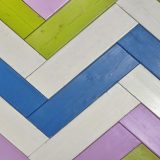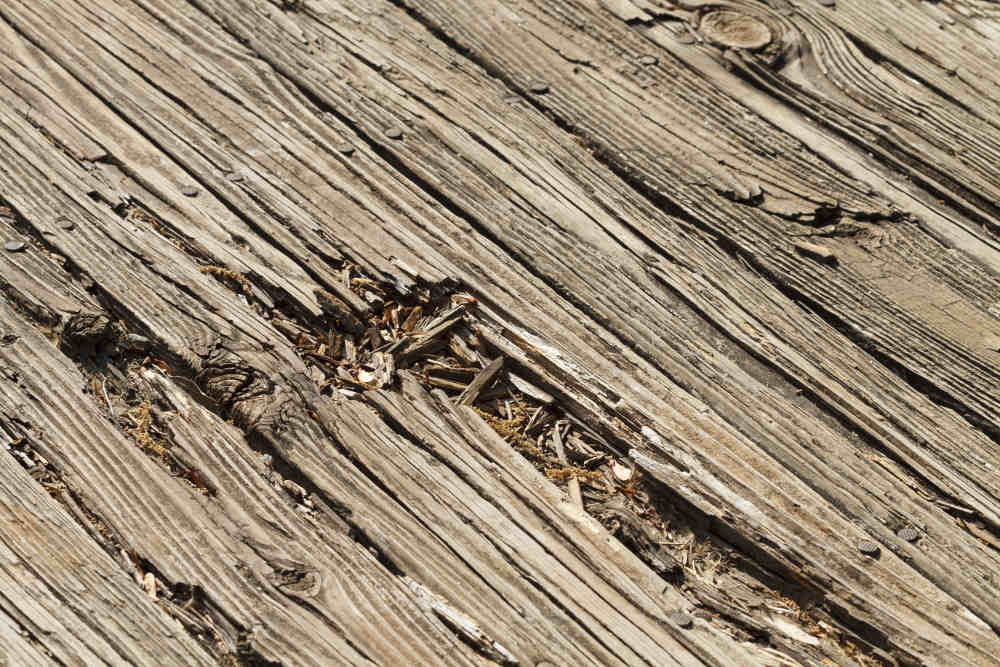Should You Use Paint Or Stain?
Your Best Option For Preserving Your Wood Deck
Wood decks are one of the most popular outdoor features of a modern home. They provide a large open surface where family and friends can gather and enjoy the fresh air without worrying about tracking dirt back into the house. Decks are, in essence, an open-air family room. However, their very nature means that they require a level of protection and maintenance beyond what you would normally give to any other outdoor feature.
The Nature Of Natural Wood
Natural wood is inherently beautiful, but the elements that make it beautiful also make it vulnerable to the elements. That gorgeous grain pattern is also the pathway water uses to get into the wood and wreak havoc on its structural integrity. The organic nature of wood means that it can have a strong reaction to temperature and moisture changes in the climate, which causes a lot of movement. The colors that give natural wood its glow also allow UV rays to penetrate deep into the wood and damage it at a cellular level.
Wood is beautiful, but that beauty brings with it a fair amount of maintenance if you don’t want that look to fade. What form that maintenance takes is a matter of choice. Frequency vs. appearance or simplicity vs. longevity. The pros & cons of paint and stain aren’t so much that one is better than the other but rather which factor is more important to you. With that in mind, let’s explore the options.
What Is A Stain?
Deck stain is a thin liquid that is easy to apply and forgiving of mistakes. All stains penetrate the fibers of the wood, leaving a thin layer of protective film above the surface. Because stains get below the surface of the wood, it is less affected by the swelling and contraction of the wood, which makes cracking and peeling of the protectant less common. However, its thinner top layer provides little protection from the effects of the sun’s UV rays.
The best feature of deck stains is that they are opaque and allow the wood grain to show through, and can even make the wood more appealing to the eye. This effect is reduced as you work up through the longer-lasting stains from opaque on up to solid stains that will almost entirely obscure the wood grain but offer better protection from the elements, with water beading off the surface instead of soaking into the wood.
To prep a deck for staining, you only need to clean the deck thoroughly and give it a light sanding. If the stain you choose doesn’t have an antifungal in it, you should also treat the wood with an antifungal before you apply the stain.
If you are using a colored stain, test the color on a similar wood before applying it to the deck. Due to the opaque nature of stains, the color of the wood can alter the color result by quite a bit. No matter what stain you use, it needs to be followed up with a good sealant unless your stain has the sealant mixed in already.
A high-quality stain can last up to 5 years, but the average lifespan is only 2-3 years.
Pros
- Relatively inexpensive
- Surface prep is minimal
- Easy to apply
- Retains or enhances the natural beauty of wood
- In general, stains provide better footing when wet
- Unaffected by pooling water
- Doesn’t cause the wood to retain moisture
- Leaves you with the option to change your mind
Cons
- Short lifespan
- Limited UV protection
- Few available color choices
- May not penetrate dense tropical hardwoods
- Cleaning takes more effort
- Power washing can damage the wood
The Properties Of Paint
Most people have a good general knowledge of paint. It’s a relatively thick, pigmented coating that can be applied to almost anything and last for years. Your color options are virtually limitless, and application requires a certain amount of skill for a perfect coat but can be accomplished by an amateur with acceptable results.
 Paint is also thick enough to fill in cracks and defects in a surface, and some paints are even specifically designed to repair minor issues in an aging deck. The drawback is that the most appealing aspect of natural wood, the grain, is completely obscured when paint is applied to its surface. The tradeoff is that the wood is fully protected from the elements and destructive UV rays. Paint becomes a protective shell when it dries, granting protection for up to a decade. This shell, however, has limited flexibility and locks any existing moisture inside the wood, which can result in peeling and cracking, followed by rot. Repainting is always an option, but the effort required to change from paint to stain makes such a change all but impossible.
Paint is also thick enough to fill in cracks and defects in a surface, and some paints are even specifically designed to repair minor issues in an aging deck. The drawback is that the most appealing aspect of natural wood, the grain, is completely obscured when paint is applied to its surface. The tradeoff is that the wood is fully protected from the elements and destructive UV rays. Paint becomes a protective shell when it dries, granting protection for up to a decade. This shell, however, has limited flexibility and locks any existing moisture inside the wood, which can result in peeling and cracking, followed by rot. Repainting is always an option, but the effort required to change from paint to stain makes such a change all but impossible.
Paint requires a great deal more preparation than staining but involves less maintenance over the following years and is easier to clean. Before you lay down your first coat of paint, your deck needs to be cleaned, sanded, treated with a fungicide, and coated in a primer. You can expect to spend at least double, if not triple, the cost just prepping the surface than you will for a stain.
Pros
- Easy to clean
- Fills in gaps and covers imperfections
- Low maintenance
- Full-color palette available
- High UV protection
- Moderate application difficulty
- Stands up to power washing
- Long-life – up to 10 years
Cons
- Can crack and peel
- Far more expensive
- Hides natural beauty of wood
- Vulnerable to pooling water
- Can be slippery when wet
- Locks moisture inside the wood
- Once you paint, you can’t go back to stain
As you can see, paint vs. stain is six of one and a half dozen of the other. Which way you choose to go depends not upon the quality of the protection but rather on which pros and cons are most important to you.
Neither Stain Nor Paint
If the concept of any serious maintenance activity gives you hives, you may want to consider moving to a composite deck instead of natural wood. Composites won’t give you the glow of natural wood, but they now come in a variety of designs and colors and have their own unique beauty. Plus, they will never splinter, crack, warp, or peel, even if all you do is wash it down with a hose once or twice a year.
Whichever way you go, a well-maintained quality deck is its own reward. If your deck is looking tired or you wish you had a deck on your house in the Central Massachusetts area, contact us at Solid State Construction. We’ll be happy to answer your questions, offer advice, or even come out to take a look.


